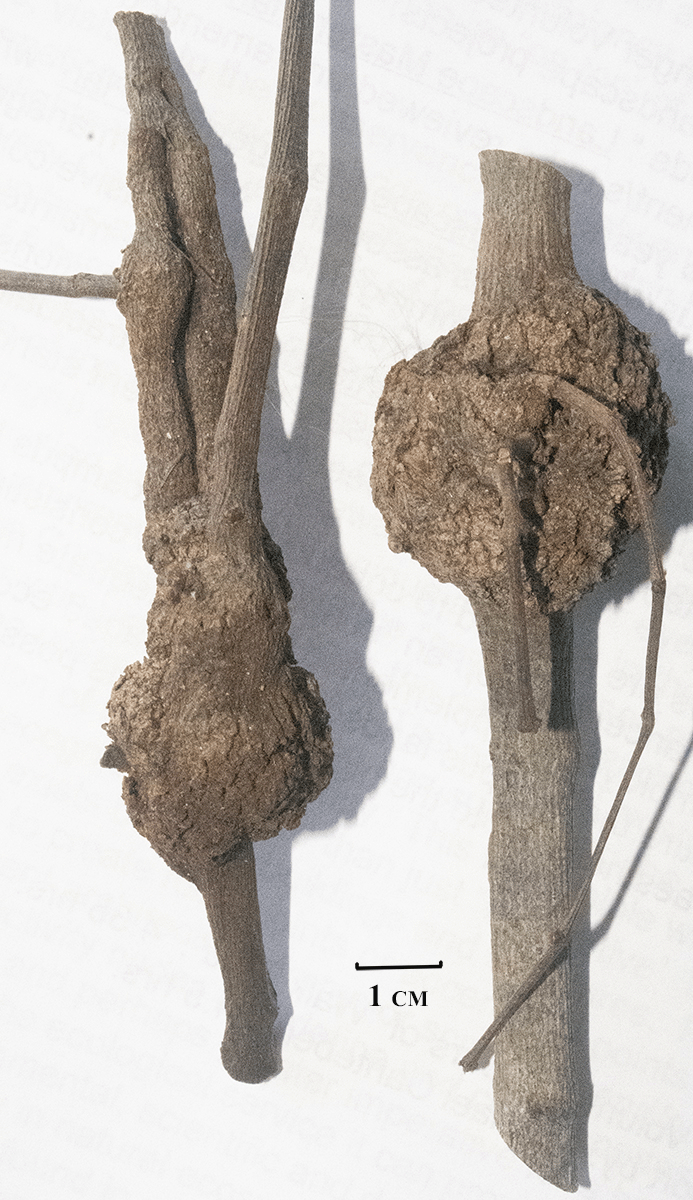
On April 3, 2023, Vitis rotundifolia (Muscadine Grape) vines growing in the oak hammock north of Smith Preserve Way, just south of the ditch, and centered along the edge of the berm of the ditch were found to have large galls.
Online research indicated that the galls were likely caused by a bacterium... Agrobacterium vitis. This bacterium has had a history of causing grape crown galls in Europe and in the United States.
A photograph was taken, and the image was sent for confirmation to Thomas Becker, Residential Horticulture Agent,UF/IFAS Extension, Collier County, 14700 Immokalee Rd, Naples, FL 34120.
On April 8, 2023 Becker stated, "I believe you are correct. The same bacterium could infect Vitis species causing the same type of symptoms known as grape crown gall. "
Becker linked an article to his e-mail, "Crown Gall of Grape-Biology of Agrobacterium vitis and the Development of Disease Control Strategies," by Thomas J. Burr, Carlo Bazzo, Sandor Sule, and Leon Otten. The article had been published in Plant Disease/ Vol.82 No. 12 .
The article explained that this bacterium lives systemically in the grape plant and causes tumorigenic growths known as crown gall at injuries caused by twisting and other wounding of the vines.
One statement in the article puzzled the webmaster: "It is interesting that, thus far, all strains from wild grape species are nontumorigenic and crown gall has not been observed on these feral vines." The muscadine grape vines in the Smith Preserve are mature, wild grapes. This provokes the question, is this sighting of what appear to be crown galls on muscadine grapes previously undiscovered, or is the bacterium that is causing the galls a different bacterium?
According to Burr's article, the bacteria may be Agrobacterium tumefaciens, which cause galls in several types of plants and "are also infrequently isolated from grape."
Thomas Becker sent an e-mail to Dr. Carrie Harmon in Gainesville on behalf of the webmaster question. Dr. Harmon is the Extension Plant Pathologist and Director of the Plant Diagnostic Center, Department of Plant Pathology, University of Florida. Dr. Harmon stated, "We generally assume Rhizobium radiobacter (formerly A. tumfaciens) causes crown gall on many hosts in Florida. However, because we run detection and diagnostic tests for disease management, we do not test the species, a process that takes weeks and hundreds of dollars via culturing then PCR and sequence analysis (MLSA). I therefore cannot actually define which species might be present, based solely on symptom and host."
[Note: PCR stands for "Polymerase chain reaction". The polymerase chain reaction is used to rapidly make millions to billions of copies of a specific DNA sample, allowing scientists to replicate a very small sample of DNA, like what would be in bacteria. MLSA means "multilocus sequence analysis." This analysis is used as a microbial typing method for pathogenic bacteria.]
According to the Burr article, "Galls are created when gall-inducing genes (oncogenes) in bacteria turn on the rapid multiplication of plant cells. ... crown gall susceptibility of grape appears to be determined by genetic determinants of the plant and pathogen."
An internet source states that Agrobacterium (Rhizobium) is a genus of bacteria that uses horizontal gene transfer to cause plants to create tumors. The way this works is that DNA from bacteria alters the hormone balance of the plant cells and the division of those plant cells cannot be controlled by the plant. A tumor forms.

